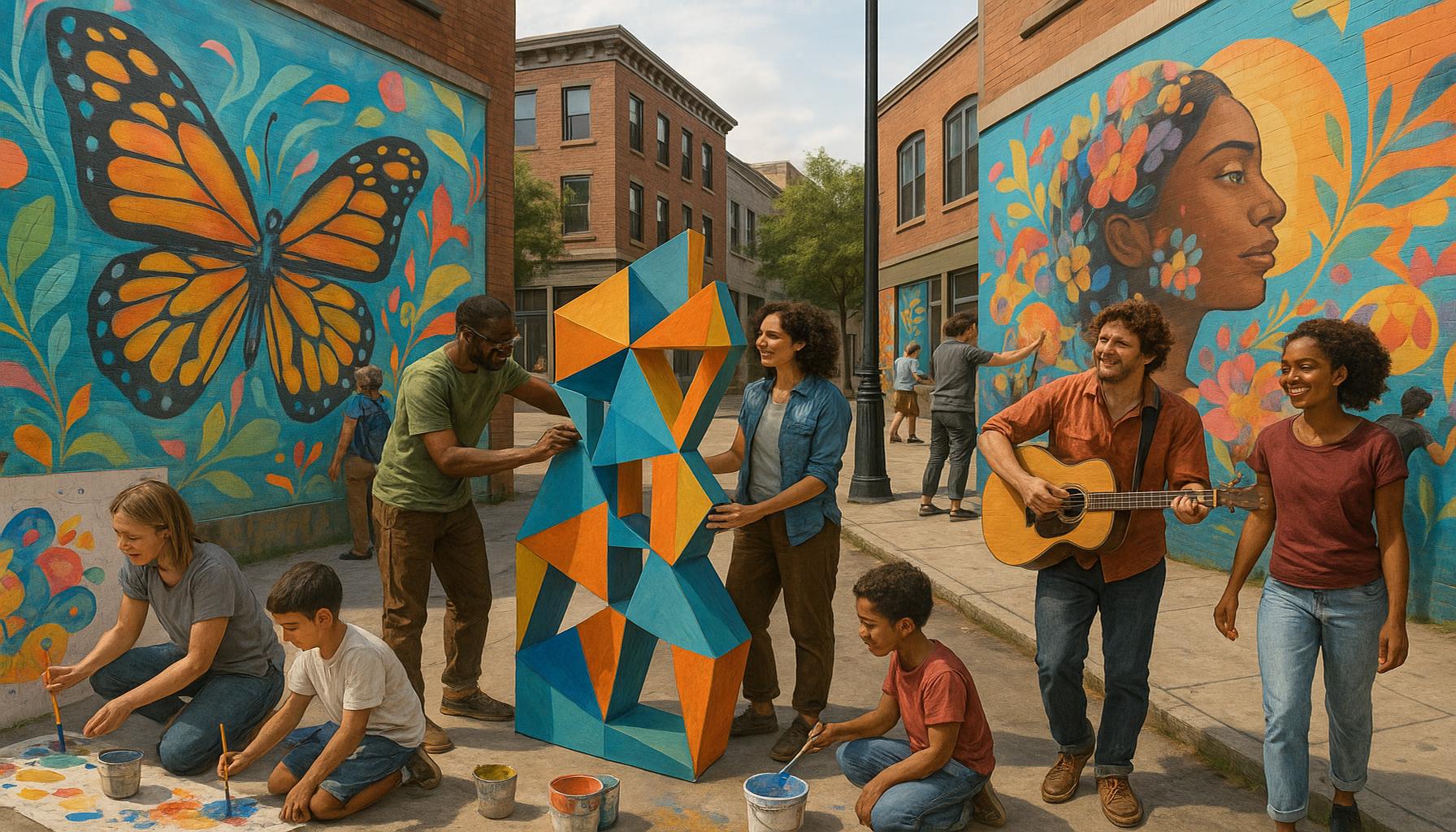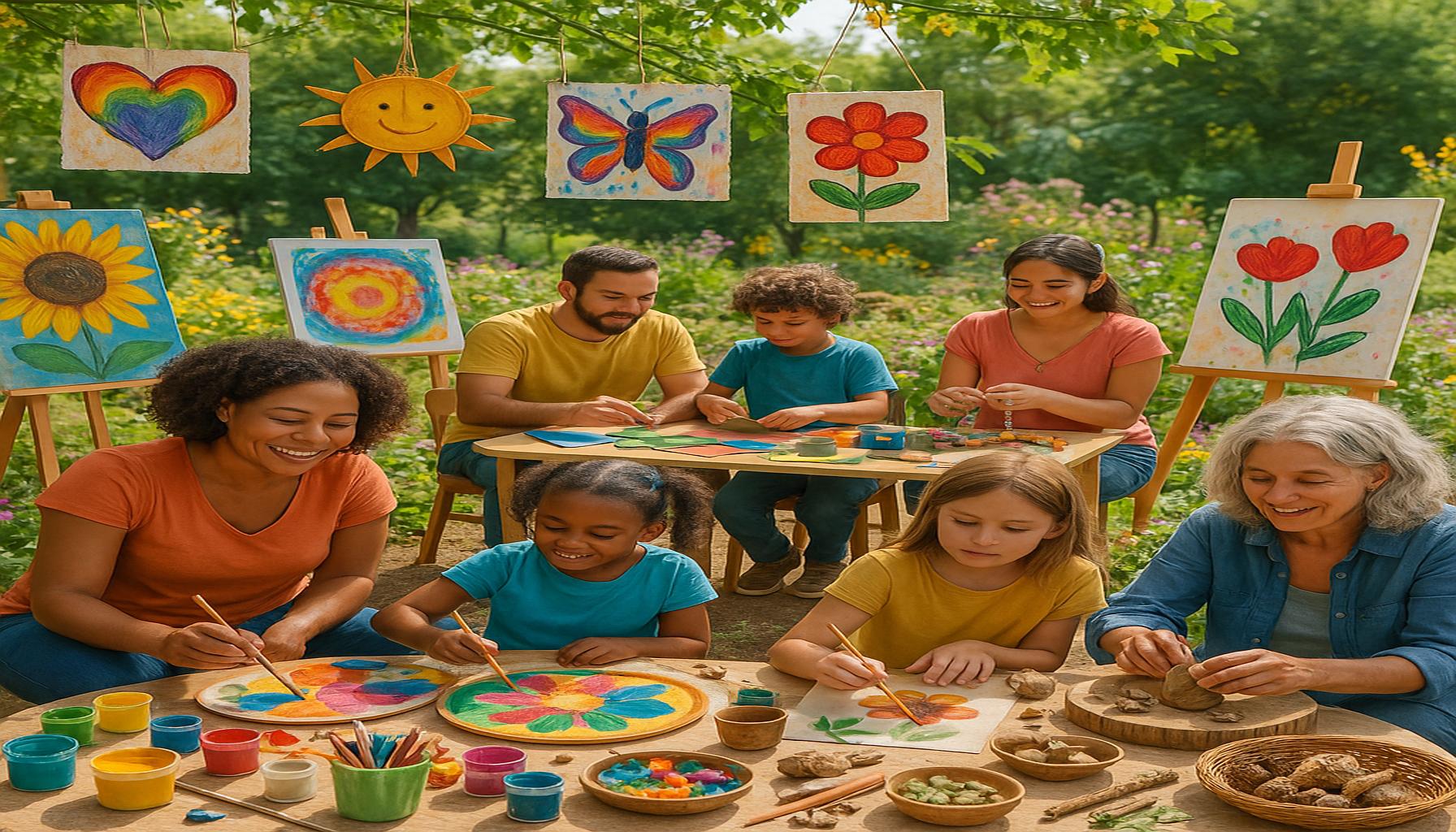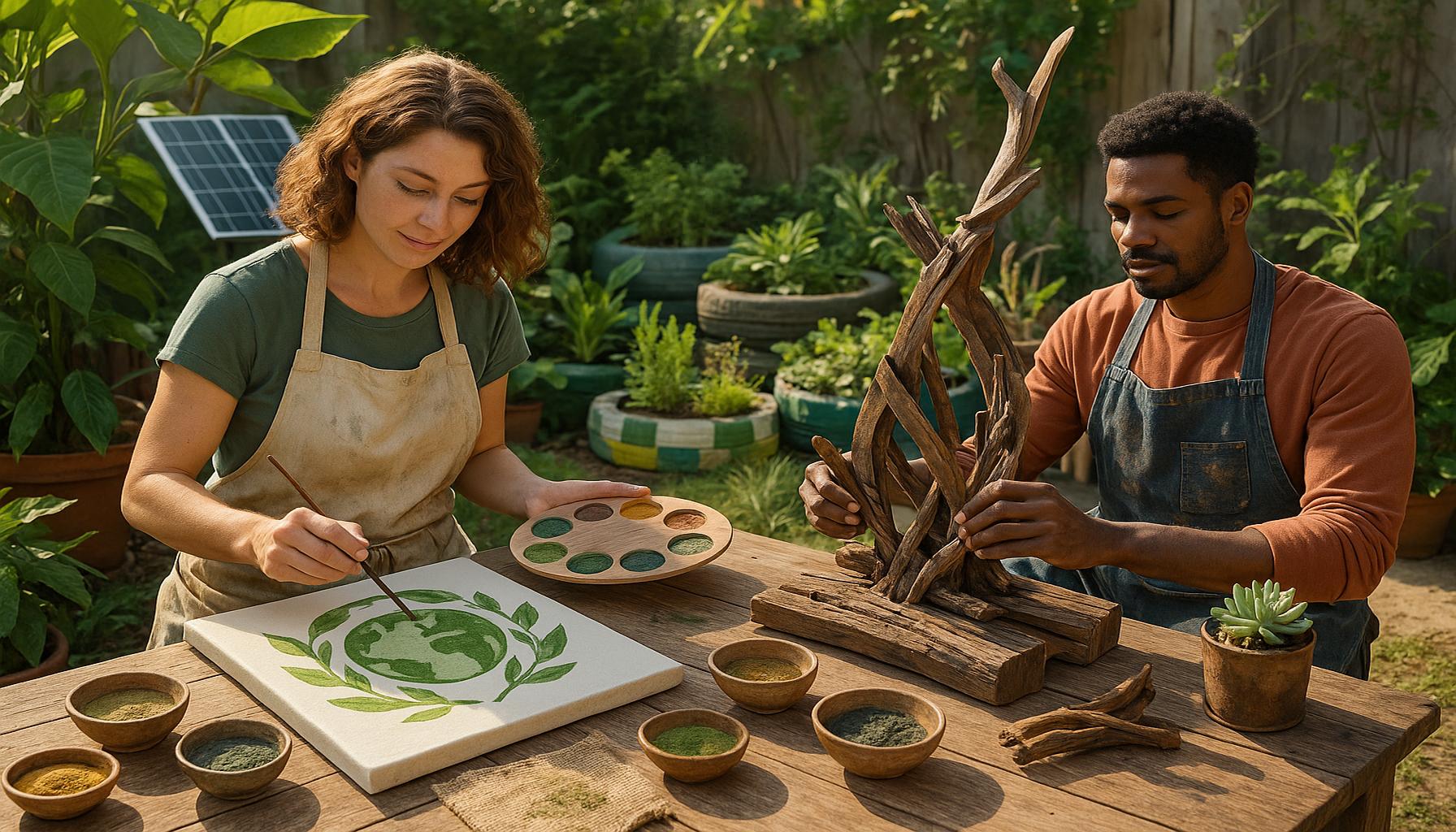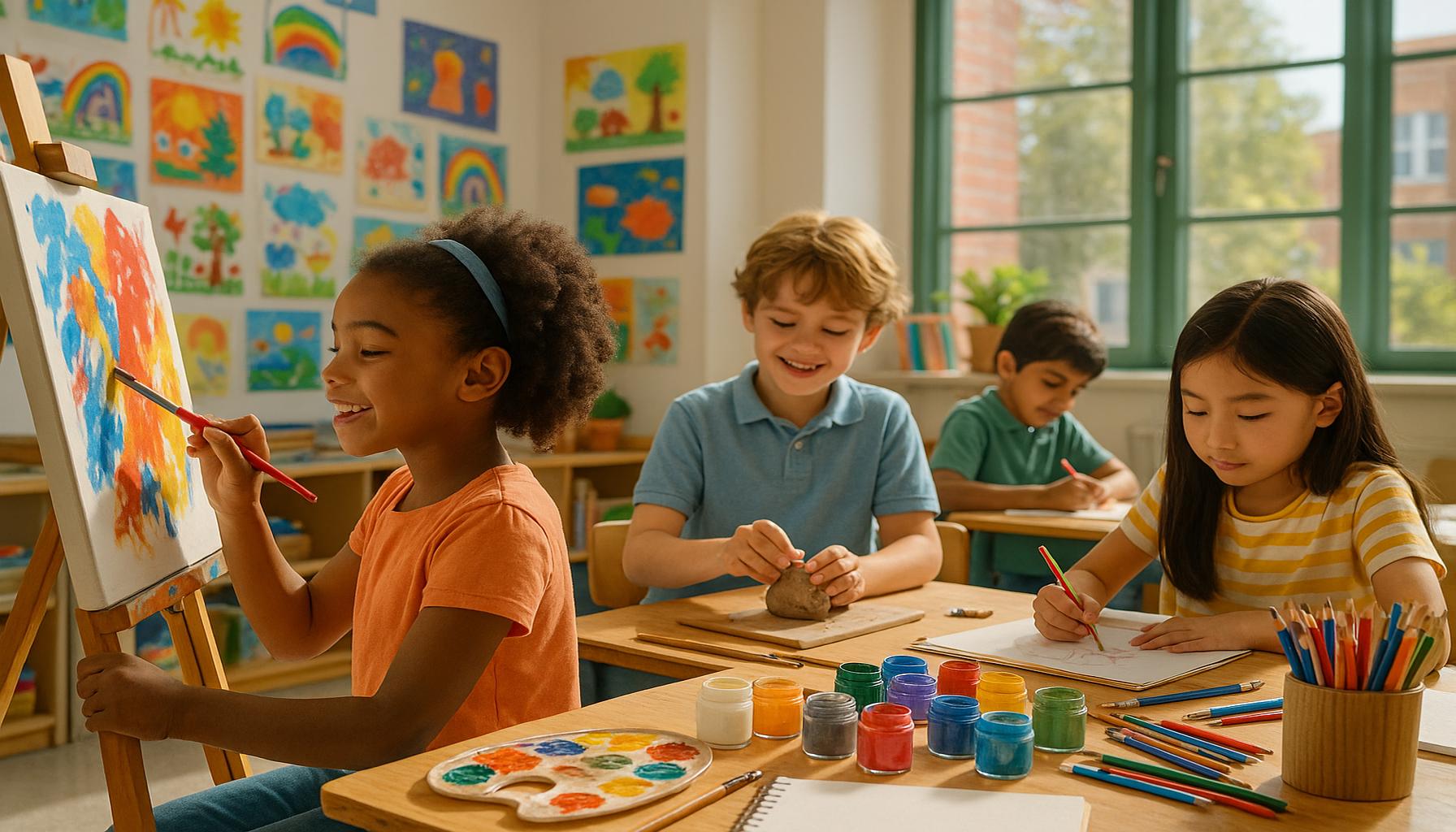Art as a Tool for Social Innovation: Artistic Projects that Transform Communities

Unlocking Change Through Creativity
In recent years, the intersection of art and community empowerment has gained significant momentum. Artistic projects are not just for aesthetic pleasure; they have emerged as vital tools for social innovation that catalyze transformation within communities.
Art has the remarkable ability to foster social engagement by encouraging participation and dialogue among community members. For instance, public art installations often invite locals to contribute ideas or even their labor, creating a sense of ownership and pride. Events such as community mural days in neighborhoods across the country allow residents to see their collective creativity come to life, while simultaneously creating spaces that resonate with local history and culture.
Furthermore, art serves as a mirror for cultural reflection, raising awareness of local challenges and fostering a stronger sense of identity among community members. For example, through storytelling festivals and cultural exhibitions, communities can illuminate pressing issues, such as social disparities or environmental concerns. These artistic expressions not only inform but educate audiences, prompting conversations that lead to action. By showcasing the unique narratives of marginalized groups, art can dispel stereotypes and promote understanding, creating a more cohesive community fabric.
Artistic endeavors also inspire creative solutions to address social challenges. When artists collaborate with civic organizations, they often come up with innovative approaches that traditional solutions might overlook. A notable example includes the use of theater to facilitate difficult discussions around mental health in schools, creating an engaging format that encourages youth to express their feelings and experiences in a supportive environment.
Projects across the United States illustrate how art can change lives profoundly. In Detroit, artists have transformed vacant lots into vibrant canvases, reflecting the community’s struggles and triumphs through stunning public murals. In New Orleans, performing arts workshops have empowered youth, allowing them to channel their experiences into performances that build confidence and resilience. These initiatives not only beautify neighborhoods but also foster empathy and dialogue among residents.

Moreover, film and photography projects are emerging as catalysts for social justice, capturing the voices of underrepresented communities. These visual narratives amplify stories that often go unheard, mobilizing support and sparking meaningful conversations about equity and inclusion. Through documentary screenings and photographic exhibitions, communities can bring attention to local issues, further pushing the envelope on what art can accomplish.
By harnessing creativity, these diverse initiatives forge paths toward a more inclusive future, proving that art can be a legitimate and transformative catalyst for social change. As the interplay between art and community continues to evolve, it becomes increasingly clear that creativity holds the potential to reshape lives and communities for the better.
DISCOVER MORE: Click here to unlock the secrets of captivating storytelling
Art-Driven Community Engagement
Art is increasingly recognized as a vital medium for fostering community engagement and facilitating dialogue around pressing social issues. Its power lies in its ability to connect diverse groups of people and inspire collaborative action, ultimately leading to substantive social change. Artistic projects that involve community participation help to break down barriers, allowing individuals from different backgrounds to share their stories and experiences in a collective forum.
One approach to enhancing community engagement is through interactive public art. These projects invite community members not just to observe, but to actively engage in the creative process. For example, initiatives like The Chicago Mural Movement encourage residents to collaborate in mural painting, tackling both cultural identity and neighborhood revitalization. Participants are empowered to contribute to the artistic expression of their environment, discovering shared values and aspirations along the way.
Transformative Artistic Practices
Several artistic practices have proven particularly effective in transforming communities:
- Community Theater: This format allows locals to reenact their stories, generating discussions around significant social issues, such as immigration, poverty, or inequality. The power of narrative combined with performance can lead to greater empathy and awareness among community members.
- Artists in Residence: Many cities are now hosting artists who collaborate directly with marginalized communities. Through workshops and mentorship, these artists facilitate creative expression while fostering a sense of pride and ownership within residents.
- Art Festivals and Events: Events providing a platform for local talent can stimulate cultural tourism and economic growth, while also reinforcing community identity. Festivals like the Philadelphia Mural Arts Festival not only celebrate artistic excellence but also invite civic participation in discussions around urban themes.
In cities like Baltimore, artistic projects have focused on healing and cohesion after tumultuous events. Following the unrest in 2015, local artists rallied to beautify neighborhoods with murals that depict resilience and unity. This melding of art and activism serves to mend community wounds while reinvigorating local pride.
Beyond visual arts, mediums such as music and dance also play a critical role in fostering social innovation. Programs like Guitars Not Guns use music education to empower at-risk youth, promoting self-esteem and positive social connections through the creative process. Such initiatives show that art can offer not only an outlet but a pathway to personal growth and collective betterment.
These examples illustrate how fostering creativity through artistic projects leads to transformative effects within communities. By engaging residents through the lens of art, we see not only the beauty of self-expression but also the potential for social transformation, making art a fundamental aspect of an inclusive future.
| Category | Description |
|---|---|
| Community Engagement | Art projects foster a sense of collective identity by involving local residents in the creation process. |
| Empowerment | Art initiatives provide platforms for marginalized voices, amplifying their stories and perspectives. |
| Social Cohesion | Collaborative art projects encourage interaction among diverse community groups, breaking down social barriers. |
| Economic Revitalization | Artistic projects can attract tourism and investment, leading to job creation and local economic growth. |
Artistic projects serve as a beacon of hope and innovation in communities. They have the potential to not only beautify, but also transform neighborhoods through active participation. By engaging local residents in the artistic process, initiatives enhance community ties while fostering a sense of ownership and pride in local identity. Furthermore, these projects elevate the voices of those often overlooked in society, ensuring that their stories are told and valued. The collaboration between diverse community members leads to a richer cultural dialogue, tearing down the walls that often divide. As art breathes new life into areas in need, it also stimulates the economy, drawing visitors and creating job opportunities, exemplifying how art can be a catalyst for profound social change. To explore the intriguing intersection of art and social innovation, further research and engagement in community-based projects are encouraged.
DISCOVER MORE: Click here to dive into the art of storytelling
Art as a Catalyst for Social Justice
The intersection of art and social justice provides a potent framework for addressing systemic inequalities and advocating for marginalized voices. Artistic endeavors that focus on social justice not only bring pressing issues to light but empower communities to envision and work towards change. These projects often foster dialogue and understanding among diverse populations, making the transformative potential of art all the more palpable.
One exemplary initiative is the Amplifier Foundation, which uses art as a tool for advocacy and activism. This organization collaborates with artists to create powerful visual narratives addressing issues such as racial justice, climate change, and women’s rights. Through their We the People campaign, they mobilized artists to produce posters and art that would resonate in their communities, sparking conversations and action around social justice. Such projects demonstrate the ability of art to galvanize support and inspire civic participation in social movements.
Artistic Spaces as Community Hubs
Another noteworthy aspect of art-driven social innovation is the creation of artistic spaces that serve as hubs for community interaction and dialogue. Venues like The Kitchen in New York City are more than performance spaces; they function as creative incubators, offering workshops, discussions, and networking opportunities for local artists and residents. Here, art becomes a shared resource fostering collaboration across multiple disciplines and cultures.
Additionally, initiatives such as the 16th Street Community Health Center’s Arts & Health program exemplify the integration of art within community health interventions. By incorporating artistic expression into health education, the program not only promotes well-being but also encourages community members to engage in conversations about health disparities. Such utilitarian approaches highlight art’s dual role as both a healing practice and a tool for raising awareness of essential social issues.
Moreover, art is proving instrumental in building resilience among communities facing socio-economic challenges. Programs like Art from the Ashes, which supports youth in high-risk neighborhoods, harnesses the power of storytelling through art to facilitate healing and empowerment. Participants channel their experiences into creative works, fostering a sense of agency and identity while addressing the scars left by systemic violence and poverty.
Examples of Art Transforming Urban Spaces
The revitalization of urban spaces through art further illustrates its role in social innovation. Projects such as The High Line in New York City turned an abandoned elevated railway into a thriving public space adorned with art installations and gardens, showcasing the positive impact of creative urban renewal. Such initiatives attract tourism and local investments, revitalizing neighborhoods while allowing residents to engage with their communal spaces actively.
In addition, Creativity in Crisis is an innovative initiative that calls on artists to engage with communities affected by natural disasters. Following Hurricane Katrina, artists transformed distressed areas into vibrant murals, promoting healing and hope amidst destruction. The result underscores art’s potential to nurture resilience and build community spirit in the face of adversity.
As we explore the landscape of artistic projects aimed at social innovation, it becomes evident that art is not merely an aesthetic endeavor but an integral tool for fostering meaningful change within communities. By championing voices, inspiring action, and challenging societal norms, art continues to play a crucial role in shaping a more equitable future.
DON’T MISS OUT: Click here to elevate your plating game
Conclusion: The Enduring Impact of Art on Community Transformation
In summary, the exploration of art as a tool for social innovation reveals its multifaceted potential to reshape communities and promote lasting change. From initiatives like the Amplifier Foundation to artistic spaces such as The Kitchen, art engages residents and provides a platform for underrepresented voices. Through visual narratives and collaborative creative incubators, communities are empowered to confront systemic issues and advocate for themselves.
Moreover, the integration of art into community health initiatives, like those seen at the 16th Street Community Health Center, illustrates how artistic expression can elevate discussions on crucial health disparities while promoting overall well-being. The resilience fostered by projects such as Art from the Ashes demonstrates that art not only serves as a medium for healing but also plays a pivotal role in identity building, especially among youth facing adversity.
As art continues to revitalize urban spaces — evident in projects like The High Line and Creativity in Crisis — it becomes clear that artistic interventions are instrumental in community renewal, promoting civic engagement and injecting life into neglected areas. This evolution highlights art’s capacity to galvanize both local and broader communities around shared goals and challenges.
Moving forward, stakeholders, artists, and community leaders must recognize and harness the full potential of art as a transformative force. By fostering partnerships and supporting innovative projects, we can ensure that art remains a powerful catalyst for social change, community coherence, and a more equitable future for all. As we witness the enduring impact of artistic initiatives, it becomes imperative to continue exploring, supporting, and investing in art as an essential tool for social innovation.


